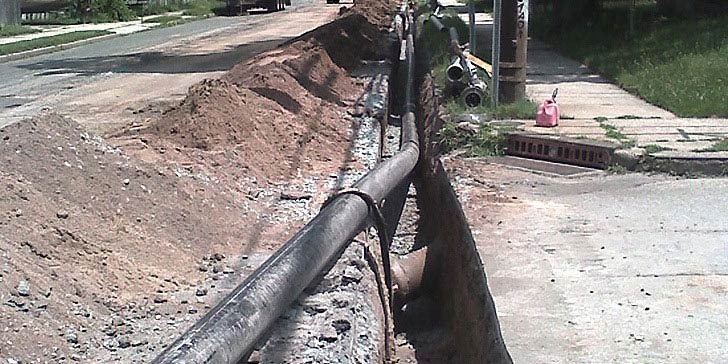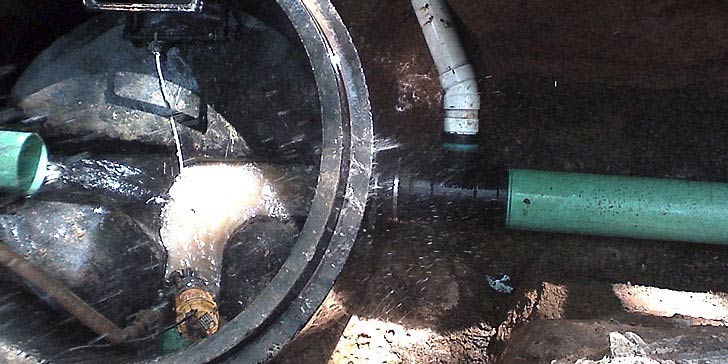We Offer Free Video Inspections!
ICUNJ has led the industry in implementing innovative solutions. No two
projects are the same, so our dedicated team of industry experts work
with you to develop customized solutions to meet the most
challenging conditions.
Infrastructure
By most accounts, transportation infrastructure in the United States is in serious disrepair. As roads and bridges across the country continue to age and deteriorate, governments at all levels are struggling to pay for maintenance and upkeep -- not to mention investments in much-needed upgrades and new projects. Since the federal Highway Trust Fund was established in the late 1950s, total combined highway and transit spending as a share of gross domestic product has fallen by about 25 percent, according to the federal National Surface Transportation Infrastructure Financing Commission. Without changes to current policy, the commission projects a federal highway and transit funding gap totaling nearly $2.3 trillion through 2035.
With Congress debating reauthorization of the transportation bill this summer, and with states and localities looking for their own solutions, here are six ideas for fixing the nation’s infrastructure system -- how to plan it, how to fund it and how to make it safer and more efficient than ever.
Revamp the Highway Trust Fund
Speaking before a conference of state transportation officials in a D.C. hotel ballroom in March, Transportation Secretary Ray LaHood challenged his audience to ask him some hardball questions. John Schroer, the transportation commissioner from Tennessee, delivered. Schroer wanted to know how Congress and the Obama administration are addressing a situation most state and local transportation officials worry about: the future of the gas tax. “Well,” LaHood replied, “we’re not doing anything about it.”
That’s a serious problem, according to virtually all transportation experts. The nation’s highways are primarily financed by the Highway Trust Fund, which gets most of its money from a gas tax of 18.4 cents per gallon. The tax has remained unchanged since 1993 and isn’t tied to the price of gas or inflation. As a result, it’s lost a third of its purchasing power over the past 18 years. That’s caused both short- and long-term consequences. In the short term, Congress has had to bail out the trust fund to the tune of $35 billion since 2008 -- the fund spends more money than it takes in. In the long term, the situation is even more problematic. As more and more Americans opt for hybrid and electric vehicles -- and as cars in general continue to become more fuel efficient -- the highway system faces a future in which it is perpetually underfunded. It’s a system, Schroer says today, that is “at best archaic.”
So what’s the fix? In the short term, a 10-cent increase to the federal gas tax, indexed to inflation, could provide some comfort. A commission authorized in 2005 by the previous highway bill has endorsed that plan as a way to generate an extra $20 billion per year for the trust fun and recapture the tax’s purchasing power. The 10-cent increase would cost U.S. households an average of $9 per month, which would equate to about 1 percent of household spending on owning and operating vehicles. But even that modest bump may be a difficult sell when the price of gas hovers around $4 per gallon. “I don’t think that at this time, raising the gas tax is an option,” says Bill Kennedy, a county commissioner from Yellowstone County, Mont., and a member of the commission that made the recommendation. “I don’t think the public is in favor of that.” It’s not just the federal government that’s reluctant to address gas taxes. No state raised its gas taxes last year, and just a handful did in 2008 and 2009.
In the long term, just about everyone besides federal lawmakers endorses a transition from a gas tax to a vehicle miles-traveled fee (VMT). That would be a truer “user fee” that pegs drivers’ payments to their use of roads, essentially solving the funding problem caused by fuel-efficient cars. “We’ve got all these federal policies toward reducing fuel consumption,” says Trey Baker of the Texas Transportation Institute, a research group within Texas A&M University. “But when you drive down fuel consumption, you’re driving down the revenue base. What are you going to do when the vehicle fleet looks completely different than it does now?”
Shifting to a VMT system would not be simple, of course. The biggest initial obstacle involves privacy concerns: Many drivers don’t like the notion of onboard monitors tracking their driving history. Convincing citizens about the necessity of moving to a VMT system might be tough too. According to research conducted by Baker, which involved interviewing focus groups, many Americans have such a minimal understanding of the current funding mechanisms for roads that making the case for a switch could be difficult.
Still, there are signs that a miles-based fee could be on the horizon: Researchers in as many as 16 states have studied the feasibility of a VMT system, according to the National Conference of State Legislatures, and some are finding that it could work. States don’t need federal permission to implement a VMT, and some transportation leaders believe the best way to bring about a change from Washington would be by first proving a VMT system is workable at the state level.
View Source




